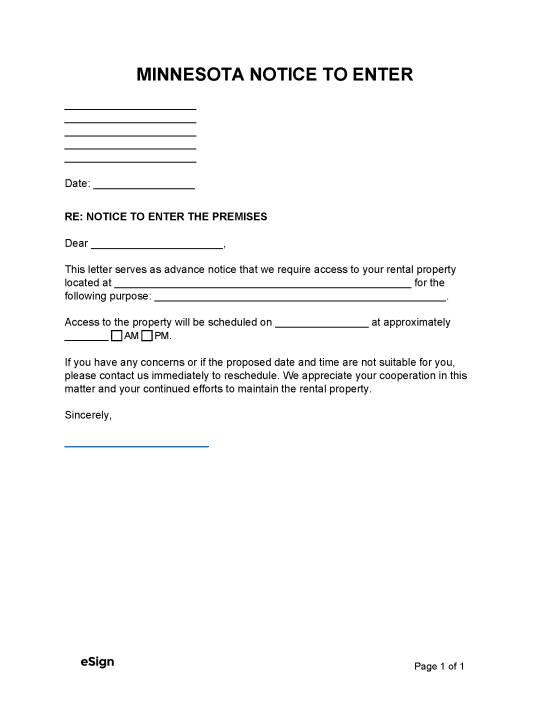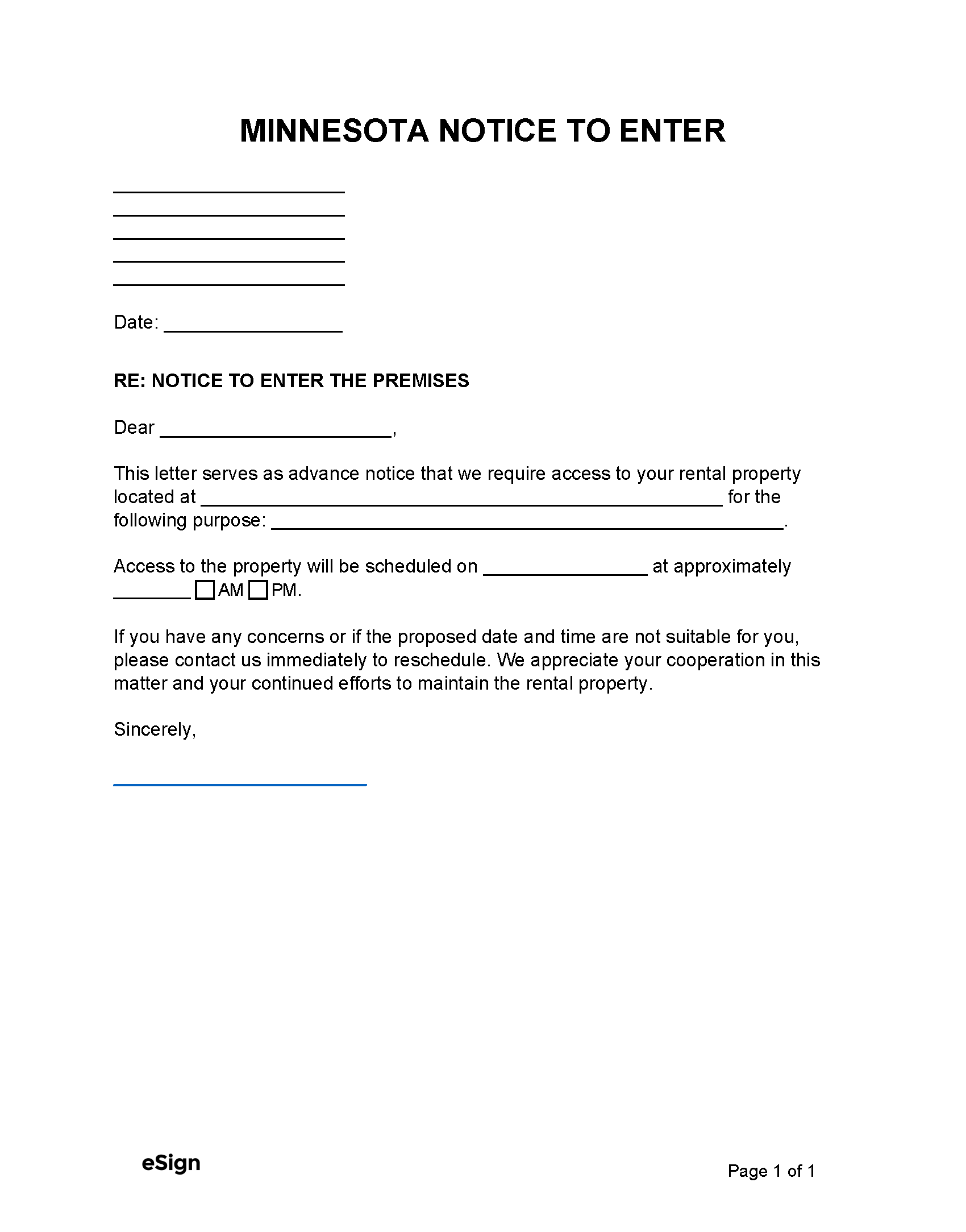Emergency Access (§ 504B.211(4)) – Landlords can enter the property without notice if they believe that immediate access is required to:
- Prevent injury to the tenants or property.
- Determine the safety of a tenant.
- Comply with local laws regarding unlawful conduct taking place on the property.
Laws
A landlord must make a good faith effort to provide the tenant with reasonable notice of the planned entry (24 hours’ notice is generally considered reasonable).
Statute: Minn. Stat. § 504B.211(2)
Reasonable Purpose
Unless it’s an emergency, the landlord must have a reasonable business purpose to enter the property, such as:
- Conducting repairs or other maintenance work.
- Showing the property to new tenants, potential purchasers, or insurance representatives.
- Allowing inspections for health, housing, building, fire prevention, or housing maintenance code violations.
- Performing prearranged housekeeping work in properties occupied by senior citizens.
- Inspecting the property following a disturbance by the tenant.
- Inspecting the property if they believe there is a lease violation, an unauthorized occupant, or the property has been abandoned.
Statute: Minn. Stat. § 504B.211(3)
Entry During Tenant’s Absence
In cases where the tenant is absent and the landlord enters the premises without prior notice, the landlord must provide a written disclosure of the entry and place it in a noticeable location within the rental unit.
Statute: Minn. Stat. § 504B.211(5)

